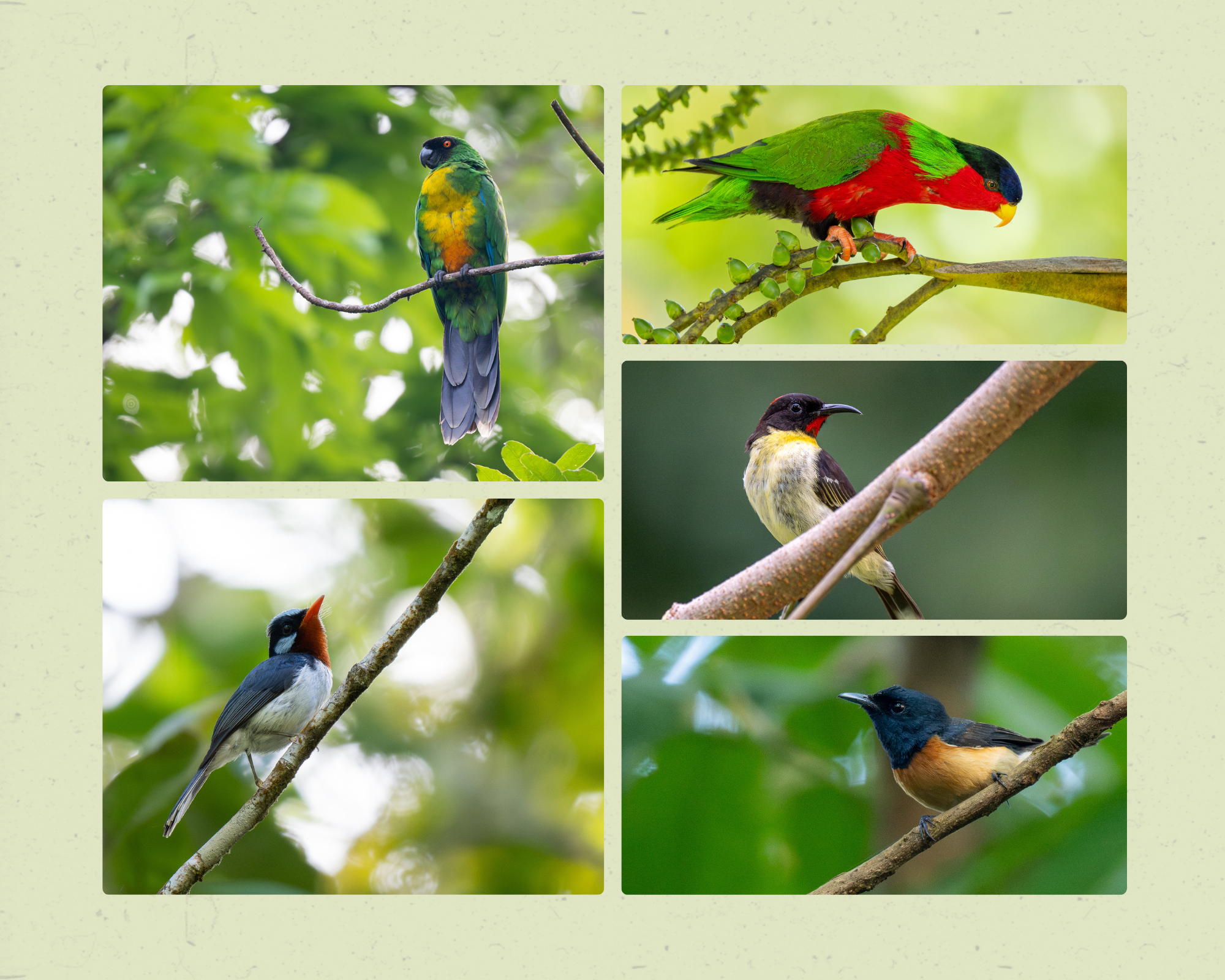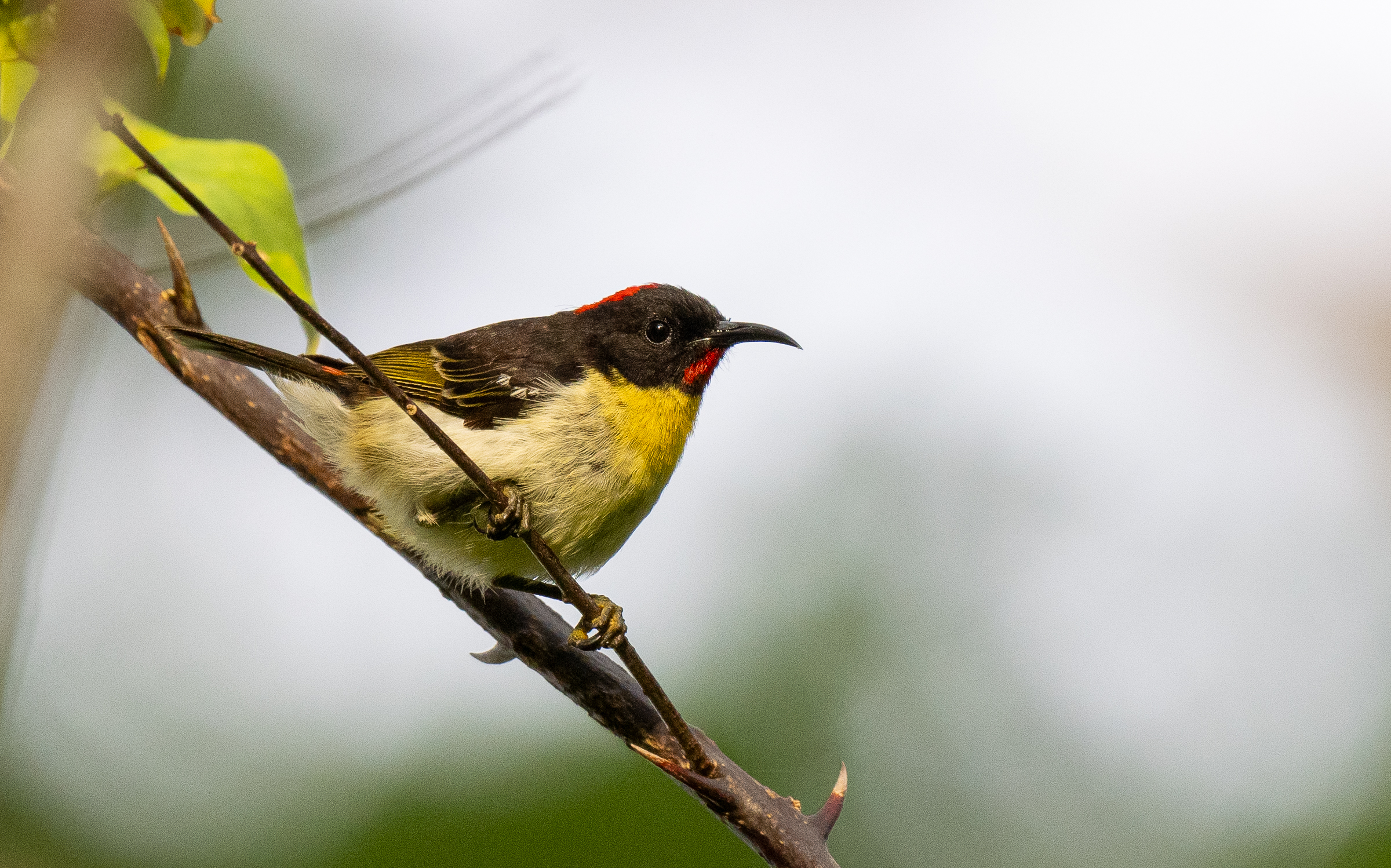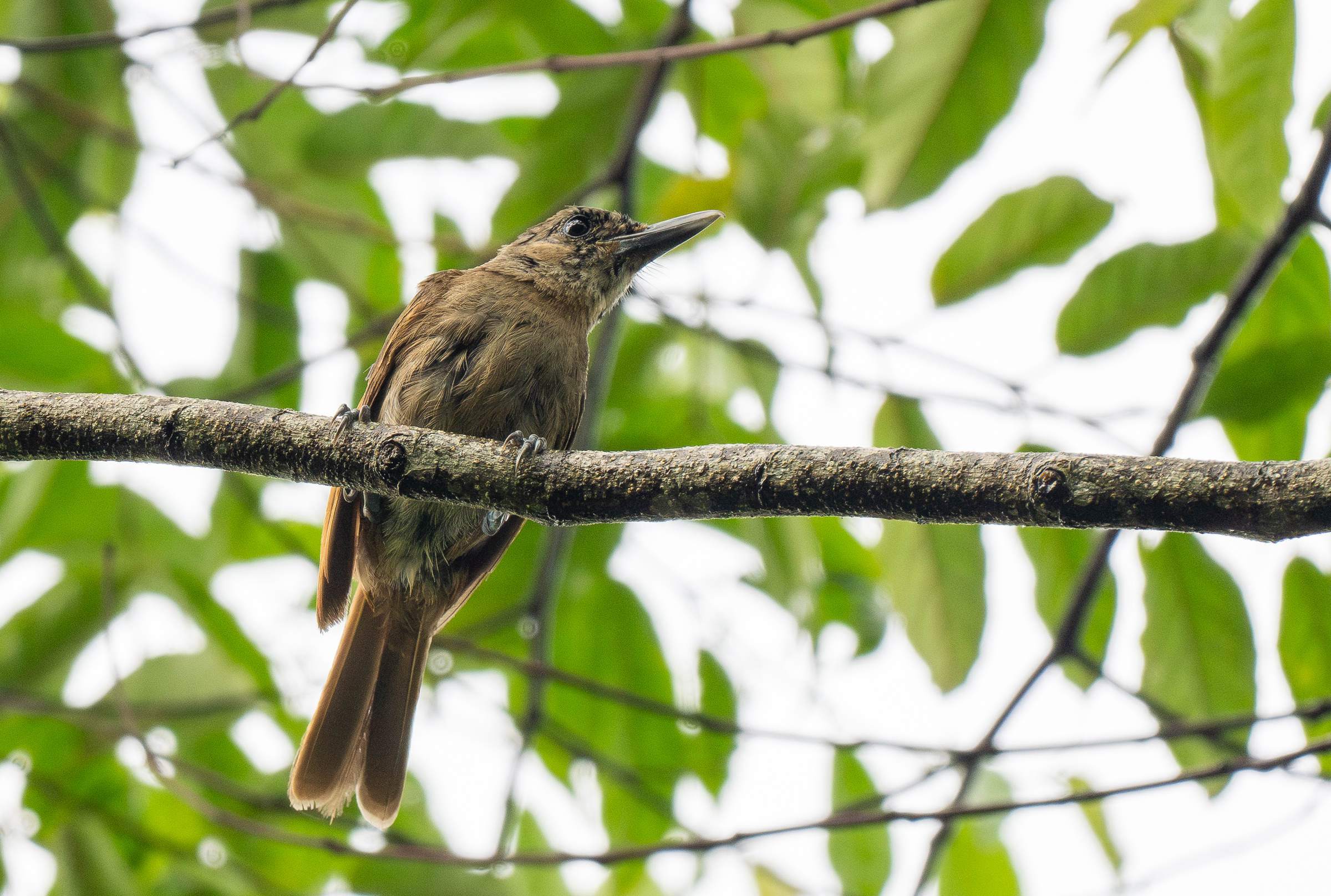I got one full day of proper birding in Fiji, but after that most of my time was spent in the capital city of Suva going to various work meetings. Thankfully, Suva has to be up there as one of the best capital cities in the world for birding, mainly by virtue of the fact that it's just a 20-minute taxi ride from the excellent rainforest of the Colo-i-Suva Forest Park. I managed to spend a couple of early mornings of birding there, but even within Suva there are some interesting spots for a first-time Fiji birder like me.
Suva itself is a pleasant city, located on a peninsula on the southeastern end of Viti Levu. Its position on the coast means it has a relatively moderate climate compared to Nadi in the northwest, and within the city the wide sidewalks and many parks and other public areas make it nicely walkable. It also has some interesting architecture remaining from the British colonial period. Between the violent repression of indigenous chiefdoms, the blackbirding slave trade, measles epidemics, and the import of indentured laborers from India Fiji saw some of the worst parts of British colonization but today it's managed to recover to be one of the more developed economies of the Pacific. These days the remnants of the British era can be seen in the status of English as the main language of government, the architecture of its major cities, and (unfortunately) the cuisine.
 |
| Suva scenery |
My first full day in Suva was, as predicted, mostly spent in discussions with various branches of government, but I did get an hour or so at the end of the day to walk around. I made a beeline for the Thurston Gardens, a beautiful little public park at the center of the city. Wildlife-wise the main attraction of the park was its enormous roost of Insular Flying Foxes, and who doesn't love a good fruit bat roost? Collared Lories were zipping around overhead, but the best bird for me was an extremely confiding male Sulphur-breasted Myzomela. Myzomelas in general are pretty generic variations on a common theme, but this one is unusually colorful with its yellow-orange breast and wings and red and black head pattern. They're also nicely common throughout Fiji, including in urban areas like this one.
 |
| Insular Flying Fox |
 |
| Collared Lory |
 |
| Sulphur-breasted Myzomela |
The next day my meetings didn't start until late morning, so I left my hotel before sunrise and took a taxi up to Colo-i-Suva Forest Park. I was still missing some key targets, particularly Chestnut-throated Flycatcher, Fiji White-eye, and Pacific Robin, and I wanted better pictures of many other birds. I got to Colo-i-Suva just as the sun was rising and started off walking down the dirt road. The first bird of the day was a very confiding Vanikoro Flycatcher that was nice enough to perch near eye level instead of directly overhead against the light as they usually do. There was an Island Thrush foraging along the road, and further down I heard the song of a Pacific Robin and was finally able to track one down- an immature male I think. Masked Shining Parrots flew in and perched over the road, and I finally got a good look at a male Fiji Whistler. I got excited when I saw a couple of pale-billed finches perched up in a tree, especially since Merlin made it look like juvenile Fiji Parrotfinches had dark bills. Alas, they were nonetheless fledgling Fiji Parrotfinches, not the Pink-billed Parrotfinch I had been hoping for, and I confirmed this when an adult came in to feed them.



 |
| Vanikoro Flycatcher |
 |
| Island Thrush |
 |
| Masked Shining Parrot |
 |
| Pacific Robin |
 |
| Fiji Whistlers are shockingly variable between islands- other subspecies have thick black necklaces and/or white throats. I wouldn't be surprised if it's another split in the future |
 |
| Baby Fiji Parrotfinches getting fed |
 |
| Northern Silver Orbweaver (Leucauge granulata) |
 |
| Green Jewel Fly (Ornidia obesa) |
Further along I heard the calls of a white-eye flock and was soon able to get onto a few Fiji White-eyes, another lifer for me. They're just about the most generic white-eyes possible, but a lifer is a lifer. There was also an extremely cool endemic orchid nearby, and a Collared Lory feeding on a flowering vine.
 |
| Fiji White-eye |
 |
| Collared Lory on some kind of melastome |
 |
| Grammatophyllum elegans, a gorgeous endemic orchid |
 |
| Spathoglottis pacifica- not endemic but still pretty nice |
 |
| Common Evening Brown, a butterfly I've seen in something like six different countries at this point |
 |
| The road in Colo-i-Suva Forest Park |
At a bend in the road I heard the calls of a mixed flock, including Fiji Bush Warbler, Fiji Whistler, and my lifer Chestnut-throated Flycatcher. The bush warblers remained frustratingly difficult to photograph, but after quite a bit of effort I ended up getting great looks at the Chestnut-throated Flycatcher. They get lost in the discussion of Fijian endemics with all the talk of doves and parrots and silktails, but in my book it's one of the best-looking birds I've seen anywhere, with its reddish-brown throat, ultramarine wings, and electric blue crown and cheek.
 |
| Fiji Bush Warbler |
 |
| Chestnut-throated Flycatcher |
 |
| Another Fiji Whistler |
On the way back to the road to catch a taxi a Fiji Goshawk flew overhead pursued by a Red-vented Bulbul, but once again I failed to get good pictures of it. Another morning highlight, however, was finding a trio of Collared Lories feeding in a flowering palm at eye level right next to the road! They let me get practically within arm's length of them as they were feeding, and I was finally able to get some satisfactory pictures of one of the most ridiculously colorful birds I've ever seen.
 |
| Terrible picture of a Fiji Goshawk, but a photo lifer is a photo lifer... |
 |
| Collared Lory! |
 |
| Selfie with Collared Lories |
Back at my hotel in Suva there was a trio of Lesser Frigatebirds wheeling above the ocean, along with a few Greater Crested Terns and a Black-naped Tern, all nice Fiji lifers. Fiji doesn't get a lot of shorebird migration, but while I was there I managed Pacific Golden Plover, Wandering Tattler, Grey-tailed Tattler, Bar-tailed Godwit and Whimbrel which I guess is better than nothing.
 |
| Lesser Frigatebird |
 |
| Great Crested Tern |
 |
| Black-naped Tern |
 |
| I didn't really set out to get pictures of Common Mynas but if one flies by like this then I guess I will |
That afternoon I had to check out of my hotel in downtown Suva, as they were fully booked for the weekend and even that Thursday night. It was a major hassle, but it gave me the perfect excuse to stay up the hill at the Rainforest Ecolodge for easy access to morning birding. It meant a $10 taxi ride to and from the office, but that was a small price to pay for waking up in the middle of the jungle.
In fact, the next morning I woke up to the sound of a Golden Dove calling outside my room! I rushed to get my camera and binoculars to go look for it, and eventually found it high in a backlit tree. They can be frustrating to find as they're shockingly good ventriloquists, and at least when I was there didn't really respond to playback at all. Their call is one of the strangest I've heard out of any dove, a weird yapping sound like a little dog occasionally interspersed with a high-pitched scream. Just utterly weird, wonderful birds.
 |
| Golden Dove |
 |
| Agriocnemis exsudans, a damselfly endemic to islands in the South Pacific |
 |
| The pond at Colo-i-Suva |
I headed over to the forest park across the road from the resort for a couple hours of birding before I needed to head into town for work. It was another good morning, although I didn't manage to photograph Fiji Shrikebill or Fiji Bush-Warbler as I had been hoping. I did get great looks at a Kikau near the entrance and another Sulphur-breasted Myzomela as I walked in. Further in, I found another Golden Dove feeding in a fruiting tree, although it mostly remained concealed behind leaves and flew off as soon as it saw me. There was another mixed flock in the same spot as yesterday, this time with Slaty Monarchs in addition to the Chestnut-throated Flycatchers, Fiji Whistlers, and Fiji Bush-Warblers. In the same place I had amazing looks at an unusually confiding Masked Shining Parrot.
 |
| Kikau |
 |
| Sulphur-breasted Myzomela |
 |
| what |
 |
| Golden Dove |
 |
| Slaty Monarch, one of the more understated Fiji endemics |
 |
| Chestnut-throated Flycatcher |
 |
| Masked Shining Parrot |
That evening I arrived from work just before sunrise, and the Golden Dove was once again calling, but once again refused to come any lower. I got good looks at a typically shy Giant Honeyeater and another busy mother Polynesian Triller, and there was a nice group of Masked Shining Parrots perched in the distance.
 |
| Golden Dove |
 |
| Giant Honeyeater |
 |
| Polynesian Triller |
 |
| Masked Shining Parrots |
December 9 was my birthday and, unfortunately, my last day in Fiji. I was flying out of Suva that morning at 10, which gave me an hour or so after sunrise to bird around the hotel until I had to be out. The Golden Dove was silent at first, so I headed out to the road and managed to get pictures of White-rumped Swiftlet and Pacific Kingfisher, two photo lifers that had been eluding me up until then. I hoped to get better pictures of the Fiji Woodswallows as well, but they once again refused to perch anywhere close to me.
 |
| White-rumped Swiftlet |
 |
| Pacific Kingfisher |
I heard Golden Dove once again from inside the resort, and went inside for one last try at it. As usual it remained elusive, and all I got pictures of was a confiding Barking Imperial Pigeon. I did, however, see a Fiji Shrikebill, and decided to try and call it in. Something came in to my recording, but it turned out to be a female Black-throated Shrikebill! The two look extremely similar but with this bird's enormous bill I'm pretty sure that it was the rarer species. Fiji Shrikebill would have been a photo-lifer for me, but it's much more common and not even endemic to Fiji (despite the name) so I was happy to get pictures of the Black-throated instead. Most pics online are of the male, so these were probably the best pictures taken of a female.
 |
| Barking Imperial Pigeon |
 |
| Female Black-throated Shrikebill |
 |
| Fiji Green Emo Skink, a last minute herp lifer |
That was sadly all I had time for as I needed to head to the airport. As it turns out I totally could have birded for another hour since they didn't even let me check in until half an hour before the flight, but when it comes to international flights I figure better to take fewer chances. My Fiji list was fewer than 50 species after a week of birding, but half of those were lifers for me, mostly some truly amazing endemics. I also came away with some of the best bird photos I've gotten anywhere this year. I can honestly say that Fiji birding is some of the most fun birding I've ever done, and I'm already looking forward to exploring other islands on future visits.

































































































Comments
Post a Comment